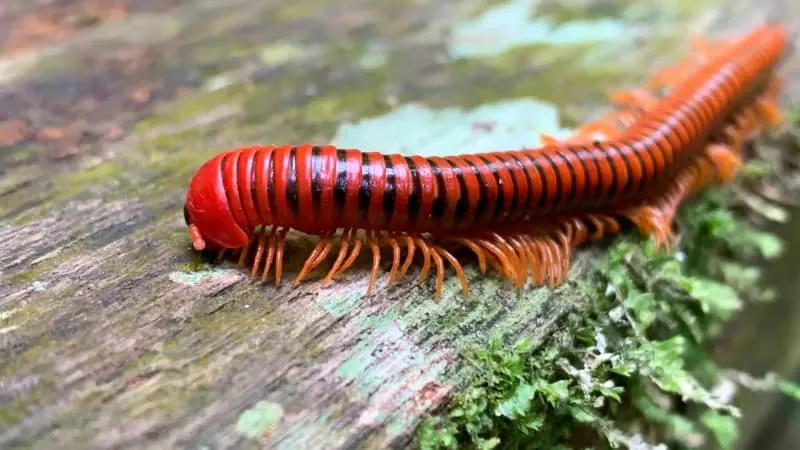
Millipede Marvels: Could These Creepy Crawlies Hold the Key to Curing Brain Diseases?
2025-09-23
Author: John Tan
Unlocking Nature's Chemical Treasure
Millipedes, often overlooked in the animal kingdom, may be the unsung heroes of medicinal science. Recent research uncovers their extraordinary chemical defenses, particularly in a fascinating subclass known as Colobognatha, which could pave the way for breakthroughs in treating severe neurological disorders.
A Potent Discovery in the Forest
At the heart of this revelation is the Andrognathus corticarius—a relatively unassuming millipede found in the leaf litter of Virginia Tech's Stadium Woods. Scientists are buzzing about newfound terpenoid alkaloids—natural compounds that interact with neuroreceptors, potentially leading to innovative pain relief and neurological treatments.
The Chemical Bounty of Millipedes
Before 2020, research on the chemical defenses of Colobognatha was minimal. However, new findings now spotlight the Platydesmida order, revealing a vast diversity of these valuable alkaloids. Virginia Tech chemist Emily Mevers, along with millipede expert Paul Marek, has identified two groundbreaking classes of compounds from A. corticarius: andrognathines and andrognathanols.
Nature's Defense Mechanism at Work
These compounds are more than just fascinating—they possess an intricate structure with seven stereogenic centers, making them notably complex for both nature and lab synthesis. When millipedes feel threatened, they release these compounds to fend off predators, with lab tests showing effects that confuse ants, showcasing their defensive potency.
A Hidden World Awaits Discovery
Despite being widespread, the biology of millipedes remains largely enigmatic. Details about their diet, behavior, and habitats are still being unraveled. The research aims to illuminate the ecological role of these organisms and the chemistry behind their defensive strategies.
From Forest Floor to Pharmacy Shelves
Natural compounds have historically been the backbone of drug discovery, and millipedes could soon join the ranks of life-saving medicine. However, synthesizing these complex molecules in the lab poses significant challenges and will require time and expertise from organic chemists before they become viable drug candidates.
The Promise of Millipedes in Medicine
What makes this research particularly exciting is that these newly identified alkaloids bind to Sigma-1 receptors—critical targets for developing treatments for chronic pain and neurodegenerative diseases. With promising avenues for drug research unfolding, the potential of these millipede compounds is vast.
A Call to Appreciate Nature's Complexity
This tale is a powerful reminder of the importance of seemingly insignificant species in science. The collaboration between chemists, ecologists, and entomologists through this research not only highlights the potential for new medicines but also deepens our understanding of biodiversity's intricate connections.
As researchers continue to explore the hidden gems of our ecosystems, the slow-moving millipede might just crawl its way into the future of healthcare.



 Brasil (PT)
Brasil (PT)
 Canada (EN)
Canada (EN)
 Chile (ES)
Chile (ES)
 Česko (CS)
Česko (CS)
 대한민국 (KO)
대한민국 (KO)
 España (ES)
España (ES)
 France (FR)
France (FR)
 Hong Kong (EN)
Hong Kong (EN)
 Italia (IT)
Italia (IT)
 日本 (JA)
日本 (JA)
 Magyarország (HU)
Magyarország (HU)
 Norge (NO)
Norge (NO)
 Polska (PL)
Polska (PL)
 Schweiz (DE)
Schweiz (DE)
 Singapore (EN)
Singapore (EN)
 Sverige (SV)
Sverige (SV)
 Suomi (FI)
Suomi (FI)
 Türkiye (TR)
Türkiye (TR)
 الإمارات العربية المتحدة (AR)
الإمارات العربية المتحدة (AR)